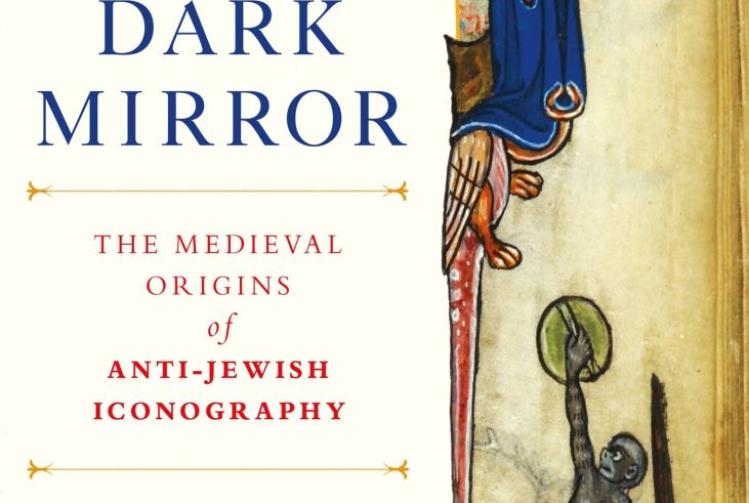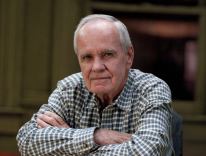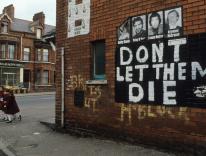
Contesting Catholicity: Theology for Other Baptists
Curtis W. Freeman
Baylor University Press, $49.95, 477 pp.
The strangeness of Curtis Freeman’s title commands attention. Who are “other Baptists,” anyway, and what does it mean for Baptists to “contest catholicity”? Freeman is director of the Baptist House of Studies at Duke Divinity School, and seeks to tell the story of Baptists “as a community of contested convictions within the church catholic, as a spiritual movement within the one, holy, catholic, and apostolic church,” rather than as a new and independent church. He sees such a retelling as critical because the Baptist tradition, at least in the United States, has been pulled between the opposing theological forces of liberalism and fundamentalism, and the opposing sociological tendencies of radical sectarianism and “mystic individualism,” to the point that it threatens to lose ecclesial coherence altogether. Freeman argues that by breaking contact with “catholicity” Baptists also break contact with the richness and diversity of their own theological tradition.
“Other Baptists,” then, are those who, like Freeman, seek an authentic Baptist identity that moves beyond the polarizing options of liberalism and fundamentalism. In doing so, these thinkers re-examine some of the defining elements in the distinctive Baptist witness, such as believers’ baptism, “soul competency,” and the primacy of Scripture. This is done in the context both of the contemporary ecumenical movement and the longer history of theology, including patristic writers as well as earlier Baptists. Both the sort of ressourcement that characterized theological renewal in Roman Catholicism before Vatican II, and the postliberal theological framework developed by Protestant theologians at Yale (Robert Calhoun, Hans Frei, George Lindbeck, David Kelsey), are put to good use. The Methodist Stanley Hauerwas and the Mennonite John Howard Yoder are also inspirations.
In the book’s early chapters Freeman carries out the diagnostic task of assessing the present condition of Baptists in the United States and how they got this way. Here he provides a detailed historical account of internal Baptist struggles, and in the process introduces readers to some extraordinary Baptist theologians (above all, James William McClendon) and pastors (especially Carlyle Marney and Warren Carr) who have pointed the way toward a more inclusive vision of Baptist identity. With his detailed accounts of the pastoral struggles and theological progression of Marney and Carr in particular, Freeman shatters the stereotypical image of Baptists in the South.
Freeman then begins the process of therapy by introducing substantive discussions of theological topics which recent Baptists have tended to avoid or minimize but which the longer Baptist tradition has vigorously engaged: the Trinity, ministry, church, Scripture, Eucharist, and the sectarian or ecumenical understandings of baptism. Freeman ends with a vision of the Baptist tradition “in which Baptists are connected with all Christians in a quantitative sense of ecumenical relations and in a qualitative sense of a common faith enacted in Word and sacrament.” Reading this generous and open invitation to Freeman’s fellow Baptists to think and act in terms of their catholicity, I appreciated learning at such depth about a theological tradition of which I was largely ignorant, and thought more than once about ways in which “other Catholics” might benefit from the profound values this tradition embodies.
Cunegonde’s Kidnapping: A Story of Religious Conflict in the Age of Enlightenment
Benjamin J. Kaplan
Yale University Press, $30, 290 pp.
In the Spring of 1762, a young Catholic woman named Cunegonde tried to kidnap her brother’s infant child as it was undergoing baptism in the Reformed Church in the town of Vaals in the Dutch Republic. The woman was arrested, but a mob of her fellow Catholics violently rescued her from detention. Local, and then national authorities, sought to restore order and bring to justice those responsible for such sacrilege and lawlessness. The Catholic parish priest of Vaals, the authorities became convinced, had spurred the simple-minded girl to her reckless act.
The dramatic event and its long legal aftermath does not appear in the standard histories of Europe or the Dutch Republic. It only came to light through the adventitious discovery of a misfiled but highly detailed dossier recounting the legal process. This dossier drew the interest of Benjamin Kaplan precisely because, according to those standard histories, such an event ought not to have happened. It was, after all, the era conventionally defined as “the Age of Enlightenment,” and therefore ought to have been as well an age of religious toleration. That the trial did happen, and that it left such a substantial—if misfiled—documentary trail, stimulated this author of earlier books on tolerance and religious conflict to construct this marvelous exercise in microhistory.
In order to comprehend Cunegonde’s act and its consequences, Kaplan is required to examine not only the theory but the practice of mixed marriages and the confusing customs concerning the baptism of infants born of mixed marriages in an officially Protestant territory set down in the middle of a Catholic district. To fully grasp those dynamics, in turn, he must meticulously show how maps showing the borders of the Dutch Republic or the Hapsburg Empire did not correspond precisely with complex patterns of interaction “on the ground” between persons of different faiths living under different jurisdictions after the Peace of Westphalia (1648). Especially those on the borders found a variety of ways to intermingle and interact: commercially, romantically (thus mixed marriages), and religiously. The possibilities of conflict as well as cooperation were intensely local and had little to do with the ideals of Enlightenment, as the tangled tale of conflicts between the Protestant city of Vaals and the Catholic city of Aachen in the decades before Cunegonde’s kidnapping shows.
Kaplan is careful not to claim too much for this incident; he does not seek to overturn entirely the standard narrative concerning the growth toward Enlightenment and toleration in Europe, not least in the Dutch Republic. But he reminds us of the special strength of detailed and specific microhistories when we are fortunate enough to have them: they caution against the easy assumption that the grand story of the triumph of toleration corresponds at every point to the experience of real people. The ideas of Hume and Voltaire had little impact on the passions and prejudices of the burghers of Vaals and Aachen. Alfred Korzybski’s famous dictum, “The map is not the territory,” is here usefully applied: the larger history of ideas and social change does not always or necessarily correspond to what is happening in our neighborhood.
Dark Mirror: The Medieval Origins of Anti-Jewish Iconography
Sara Lipton
Henry Holt and Company, $37, 411 pp.
In this thoughtful, learned, and carefully argued study, Sara Lipton seeks to find satisfactory answers to this well-established fact: for the first thousand years of Christianity, “there were no visible Jews in Western art,” yet “by the close of the Middle Ages, the Jew had become one of the most powerful and poisonous symbols in all of Christian art.” She rejects the common explanation that such artistic renderings simply expressed the steadily growing animus, also found in medieval literature and politics, toward Jews that began with the First Crusade. Indeed, she argues that the representation of Jews in medieval art has much less to do with Christian attitudes toward their Jewish neighbors than it does with struggles within Christian culture. Medieval representations of Jews were based not on observation of real Jews, but on the symbolic development of tropes found in Scripture and Christian theology. “Simply labeling artists or patrons, or the general culture, as anti-Semitic tells us little about why these images were made or what they meant to the people who made and viewed them,” she writes.
Lipton begins with the premise that Jews were first important to medieval Christians not because of the way they appeared but because of the way Christians imagined Jews to see, or not see. Paul had located the unbelief of Jews in their spiritual blindness, while Augustine spoke of the continuing existence of the Jews as constituting a form of witness. The earliest representations of Jews in medieval art play on these biblical and patristic themes, not in order to caricature contemporary Jews, but as a way of instructing Christians in proper modes of attentiveness and vision.
Subsequent elements in the portrayal of Jews likewise gave visible form to Christian anxieties concerning bodies, wealth, the growth of cities, taxation, legal forms, and the opulence of art itself. Artistic representations of Jews for most of the medieval period, in short, used the otherness of the Jews for internal Christian instruction. In the process, however, the ever-more-elaborate ways of marking that otherness both fed and fed off of the increasingly virulent portrayals of ancient and contemporary Jews in literature.
To make her complex and well-balanced argument, Lipton must pay the closest attention to historiographic periodization—with attention to the literary and political contexts of each stage—and to differences in artistic genre, each with its function (illuminated manuscripts, portable altars, stained glass windows, patron-sponsored frescoes). She must also lead the reader persuasively through the close examination of specific examples. The book contains one hundred eleven black-and-white and fourteen colored illustrations. Each of them, as well as many other carefully documented artifacts, is discussed at considerable length.
Readers who are neither medievalists nor art critics are, by means of such precise exegesis, also instructed in what and how to see. I found two chapters especially informative. “Where Are the Jewish Women?” makes a subtle but convincing argument concerning gender in the Middle Ages. “The Jew in the Crowd: Surveillance and Civic Vision” nicely pulls together Lipton’s themes concerning seeing and being seen, and the functions of medieval art in identity formation. Lipton notes the double-edged character of visual representation: “Whenever we create images of a stranger, alien, foreigner, or even the unknown person across the street, we should bear in mind that we are also creating an image of ourselves.”
Because she refuses to engage in easy praise or blame, but insists on a dispassionate consideration of the evidence, Lipton’s work is demanding but also rewarding. Readers come to appreciate the full humanity of the Christian creators of the art depicting Jews, and to grieve over representations that distorted the humanity of the Jews themselves.
One Nation, Under Gods: A New American History
Peter Manseau
Little, Brown and Company, $28, 469 pp.
The story of America as a Christian nation, shaped by John Winthrop’s vision of a “City on a Hill,” is fundamentally wrong, Manseau argues. Why? Because it leaves out of account the many examples of religious (and anti-religious) diversity that have been present from the beginning. He seeks to correct the story by telling it, not from the middle, but from the margins. Beginning with the encounter between Columbus and the Taino, Manseau provides example after example of how religious outliers have engaged, challenged, and sometimes influenced a dominant (and always aggressively exclusive) Christian tradition. Religious diversity, he says, has been thoroughly American from the start, even if the Christian majority has seldom wanted to acknowledge it.
In each chapter, a single individual or incident leads to a consideration of the broader historical context and the ways in which the challenge posed by religious difference led either to violent suppression at the hands of the Christian authorities, or to the subtle and positive influence on (more or less) Christian leaders. In the first category we find the cases of Anne Hutchinson, the witches of Salem, African Muslim slaves, the Sikhs of Bellingham, and the Japanese Buddhists. In the second, the Iroquois and Ben Franklin, the Upanishads and Ralph Waldo Emerson, the Iroquois and Joseph Smith.
Manseau’s writing is lively, the citation from primary sources instructive, and—apart from an almost inevitable animus toward most things Christian—the tone is equable. He finds a place for the religiously disaffected, for atheists like William Livingston, and for the seriously addled hucksters who sponsored cosmic awareness and “Be-Ins” in the sixties. One is not surprised to find the attitude of the Deist Thomas Jefferson recommended in the book’s epigraph: “It does me no injury for my neighbor to say there are twenty gods, or no god.” An entire chapter is devoted to Jefferson’s gift of his library to the nation in 1814 and the congressional battles it generated—a foretaste of present-day culture wars.
Manseau’s avowed purpose is to show how faith conflicts “somehow arrived, again and again, not merely at peaceful coexistence but at striking moments of inter-influence,” and he envisages a nation of persons “bound together by something more significant than their own individual beliefs.” Despite the appeal and sometimes the pathos of his individual accounts, however, Manseau does not at all make clear what that “something more significant” might be. In his conclusion, he proposes replacing the image of the city on the hill—because cities have walls that keep people out—with an image drawn from the sacred hole in the ground located within the Catholic Church, El Santuario de Chimayo, in New Mexico. Pilgrims of many faiths come to scoop dirt from the hole, eat it to heal their ills, and then return home. Perhaps the understanding of religion as exclusively a matter of individual needs without any demand to build a coherent community is appealing to contemporary tastes. But the image of the city—which not only has walls but also gates and streets and intense human interaction—is the more profound religious symbol. Cities are about building something greater than the individual and celebrating something more fundamental than individual needs. Winthrop’s image of the city on a hill really does summon humans to “something more significant.” It summons us to our responsibility to God.
Please email comments to [email protected] and join the conversation on our Facebook page.
Share
Previous Story
Poems | 'A Lot of Ways' & Two Other Poems
Next Story
The Catholic Church & Argentina's Dirty War


